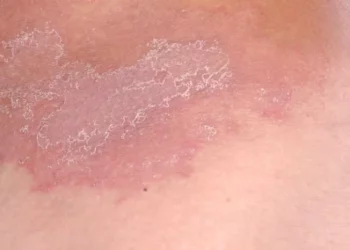Ringworm, despite its name, is not caused by worms but rather by a fungal infection. This common misconception often leads to confusion about its transmission, particularly whether it can be spread through the air. In this article, we will delve into the question: Is ringworm airborne? We’ll explore the nature of ringworm, its transmission, and dispel some myths surrounding this fungal infection.
Understanding Ringworm
Before delving into its transmission, it’s essential to understand what ringworm is. Ringworm, medically known as dermatophytosis, is a fungal infection that affects the skin, scalp, and nails. It’s caused by various fungi belonging to the dermatophyte group, including Trichophyton, Microsporum, and Epidermophyton species. Despite its name, ringworm doesn’t involve worms at all. Instead, it manifests as red, itchy, and sometimes ring-shaped rashes on the skin, leading to discomfort and irritation.
Modes of Transmission
Ringworm can spread through various means, but direct contact with an infected person or animal is the most common route of transmission. This direct contact can occur through touching infected skin or sharing contaminated items such as clothing, towels, or sports equipment. Additionally, coming into contact with surfaces or soil contaminated with fungal spores can also lead to infection.
Airborne Transmission: Fact or Fiction?
The question of whether ringworm is airborne often arises due to misconceptions about its transmission. Unlike respiratory infections such as the flu or COVID-19, ringworm does not primarily spread through the air. Instead, it requires direct contact with an infected individual or contaminated surface for transmission to occur.
However, there are instances where airborne particles may play a role in the spread of ringworm. For example, when an infected person scratches their skin, fungal spores can become airborne and potentially settle on nearby surfaces. While this scenario technically involves airborne particles, it’s not the primary mode of transmission for ringworm. Direct contact remains the primary concern.
Dispelling Myths
Despite the lack of airborne transmission as the primary route, several myths persist regarding ringworm:
1. Myth: Ringworm is caused by worms.
Fact: Ringworm is a fungal infection caused by various dermatophyte fungi, not worms.
2. Myth: Ringworm can be spread through casual contact.
Fact: While direct contact is the primary mode of transmission, casual contact with an infected person or pet is unlikely to result in transmission unless prolonged or frequent.
3. Myth: Ringworm is only spread from person to person.
Fact: Ringworm can be transmitted from animals to humans and vice versa. Pets, particularly cats and dogs, can carry the fungus and infect their owners.
4. Myth: Ringworm is always visible.
Fact: Ringworm can sometimes be asymptomatic or have subtle symptoms, making it possible to spread the infection unknowingly.
Prevention and Control
Preventing ringworm infection involves adopting good hygiene practices and avoiding contact with infected individuals or animals. Here are some preventive measures:
1. Maintain good hygiene: Regularly wash your hands with soap and water, especially after contact with pets or potentially contaminated surfaces.
2. Avoid sharing personal items: Refrain from sharing clothing, towels, combs, or other personal items with individuals who have ringworm.
3. Keep pets clean and treated: Regularly bathe and groom pets to reduce the risk of them carrying the fungus. Consult a veterinarian for appropriate antifungal treatments if necessary.
4. Clean and disinfect: Regularly clean and disinfect surfaces that may harbor fungal spores, such as floors, countertops, and pet bedding.
If you suspect you have ringworm or have been in contact with an infected individual or animal, consult a healthcare professional for proper diagnosis and treatment. Antifungal medications, whether topical or oral, are typically prescribed to treat ringworm infections.
Conclusion
In conclusion, ringworm is not primarily airborne but spreads through direct contact with infected individuals, animals, or contaminated surfaces. While airborne particles may play a minor role in transmission, they are not the primary concern. By understanding the true nature of ringworm and adopting preventive measures, individuals can reduce the risk of infection and effectively control its spread. Dispelling myths and promoting accurate information are crucial steps in combating the misconceptions surrounding this common fungal infection.

























